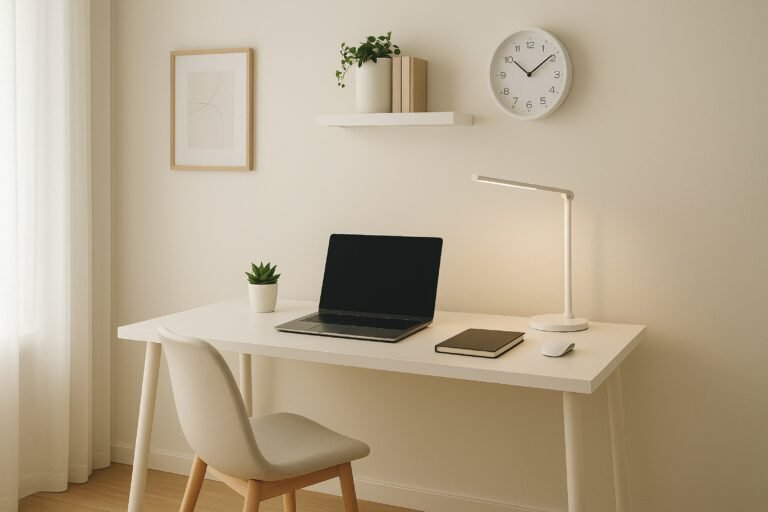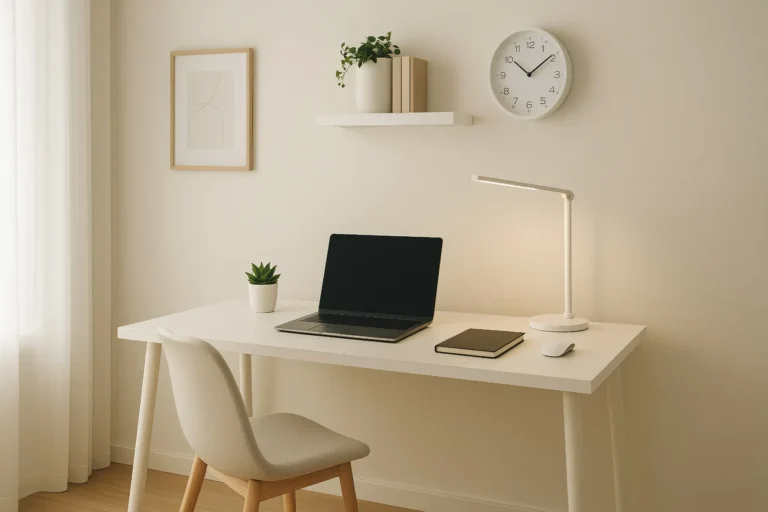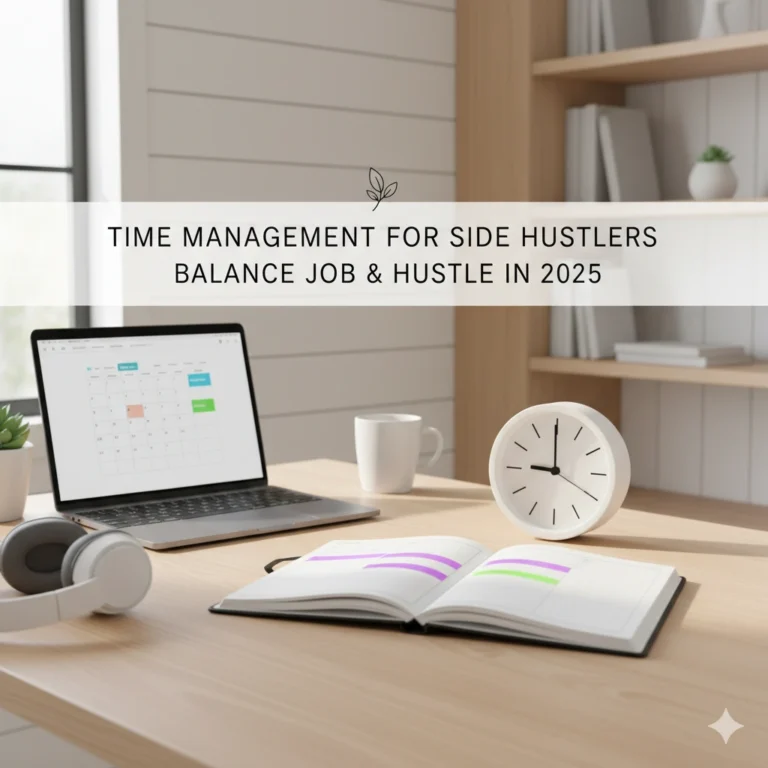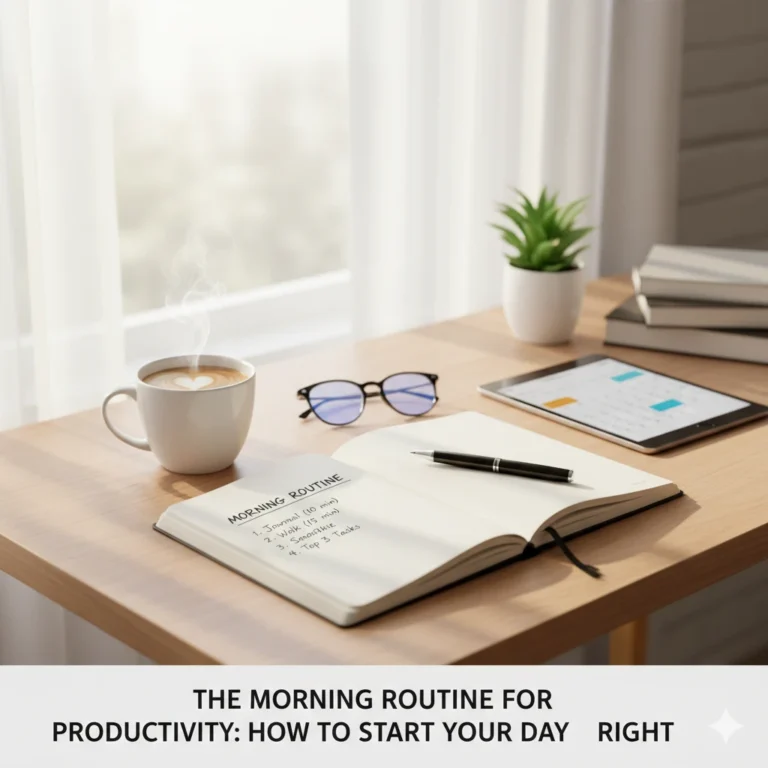Hybrid Work Productivity: How to Stay Focused Between Home and Office in 2025
The hybrid work model has become the new normal. While the early 2020s saw a surge in remote jobs, many organizations now encourage a balance of in-office and at-home work. Hybrid schedules aim to combine flexibility with collaboration—but for many professionals, they create one pressing challenge: hybrid work productivity.
Balancing two environments means balancing two sets of distractions, routines, and expectations. At home, you may be tempted by house chores or family interruptions. In the office, you may be pulled into constant meetings or distracted by chatter. Understanding how to maintain focus in hybrid work is no longer just a nice-to-have skill—it’s essential to career growth, work-life balance, and overall performance.
In this guide, we’ll break down the most common hybrid work distractions, explore proven strategies for focus, compare work from home vs office productivity, and share the best tools for hybrid workers.
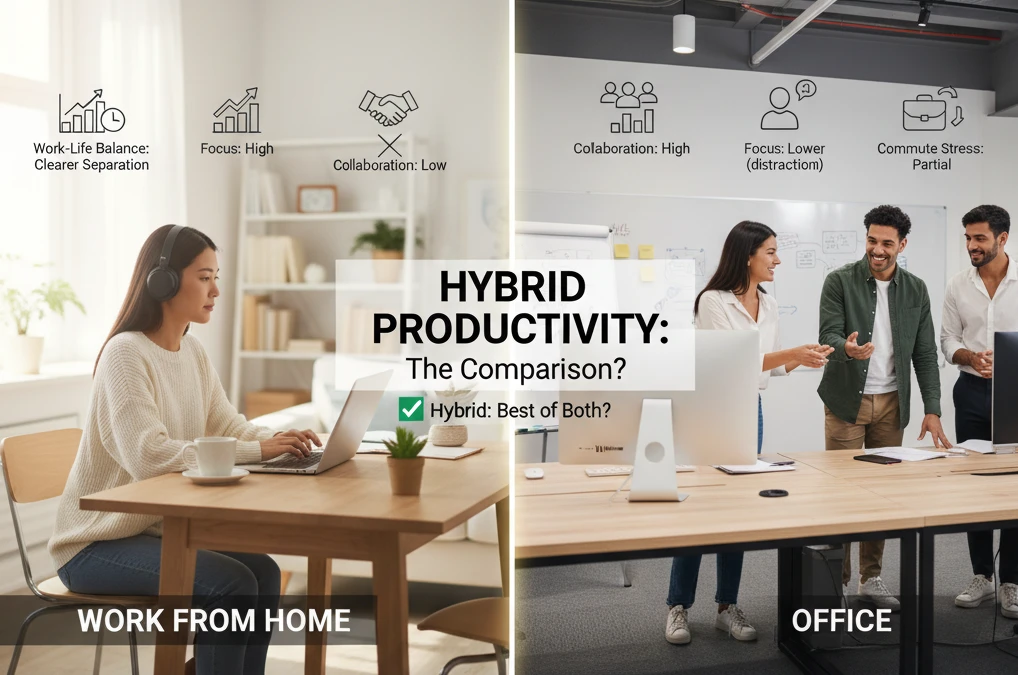
What Is Hybrid Work and Why Focus Is Harder?
Hybrid work blends in-office and remote work. Employees might spend two or three days at home and the rest in the office. While this arrangement offers flexibility, it also complicates daily rhythms.
📊 According to the Bureau of Labor Statistics (2024), about 22.9% of U.S. workers performed some or all of their work remotely. That’s down from the pandemic peak but still represents tens of millions of professionals balancing two environments.
📊 Gallup’s 2024 Workplace Report adds that 52% of employees now work in some form of hybrid schedule, and managers cite “focus management” as one of the biggest ongoing challenges (Gallup).
Why is focus harder in hybrid setups? Because our brains crave consistency. Switching environments each week forces us to constantly re-adjust: different desks, schedules, commutes, and social interactions. This reduces “deep work” capacity, making it tougher to enter flow states.
This is why hybrid work productivity strategies need to go beyond simple time management—they must help workers build sustainable focus across shifting contexts.
The Biggest Hybrid Work Distractions
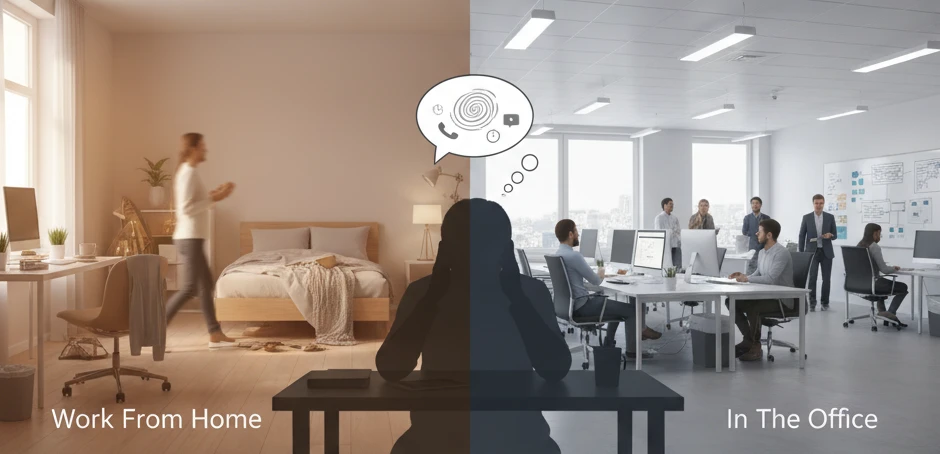
At Home
- Household chores constantly “calling” your attention
- Family members or roommates interrupting during work hours
- Notifications and digital distractions multiplying without clear boundaries
In the Office
- Frequent meetings—many of which could have been emails
- Open-plan noise, side conversations, or constant walk-ups from colleagues
- Social expectations to chat or participate in spontaneous discussions
Transition Days
- The fatigue of commuting after days at home
- Carrying laptops, notes, and adjusting setups repeatedly
- Loss of rhythm when routines shift midweek
👉 For more on building daily systems, see Time Management Tips for Side Hustlers.
Strategies to Stay Focused at Home
Create a Dedicated Workspace
Even if it’s just a corner of your bedroom, designate a “work zone.” This signals to your brain that you’ve entered “focus mode.” Keep it clutter-free and, if possible, invest in a minimalist desk setup
Use Rituals and Boundaries
Start your day with a short ritual—like making coffee, writing a to-do list, or stretching. End it with another, like closing your laptop and taking a short walk.
Time-Blocking and Deep Work
Schedule deep work blocks for your most important tasks. Use a Pomodoro timer or 90-minute sprints. This structure prevents your attention from scattering across tasks and helps maintain focus in hybrid work environments.
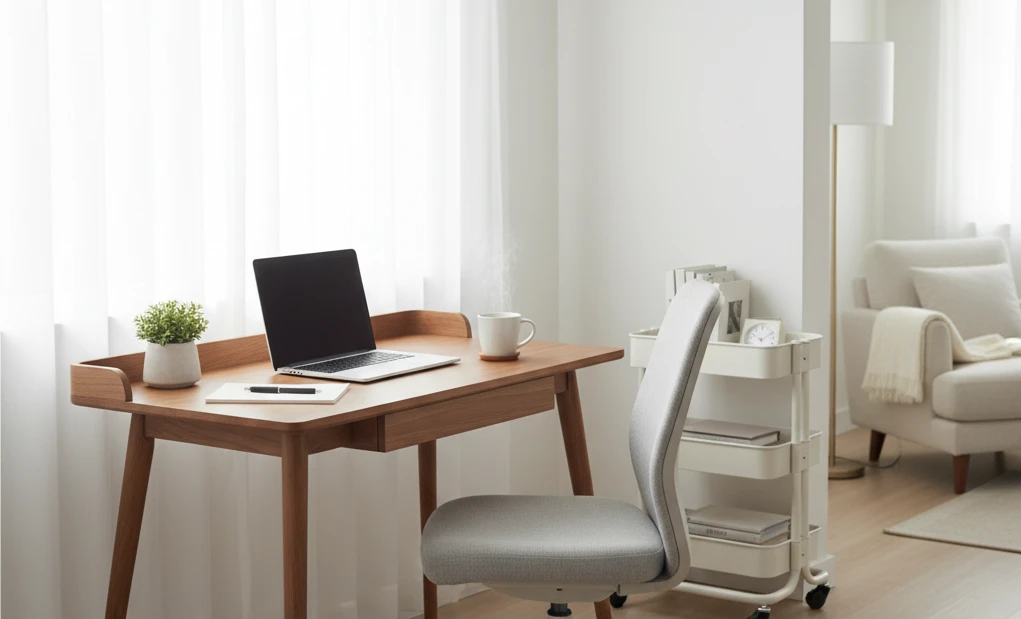
Strategies to Stay Focused in the Office
Manage Meetings Proactively
Set agendas, decline unnecessary invites, and block out time for solo work.
📊 A Microsoft Work Trend Index (2023) found that the average worker spends 57% of their time in meetings, email, and chats, leaving little time for focused work (Microsoft).

Reduce Noise and Interruptions
Noise-canceling headphones can be a lifesaver. Pair them with focus playlists or white noise.
Use Micro-Breaks Wisely
Short, intentional breaks every hour keep energy high without letting distractions take over.
Tools for Hybrid Workers That Boost Productivity
The right tools for hybrid workers can transform your hybrid experience.
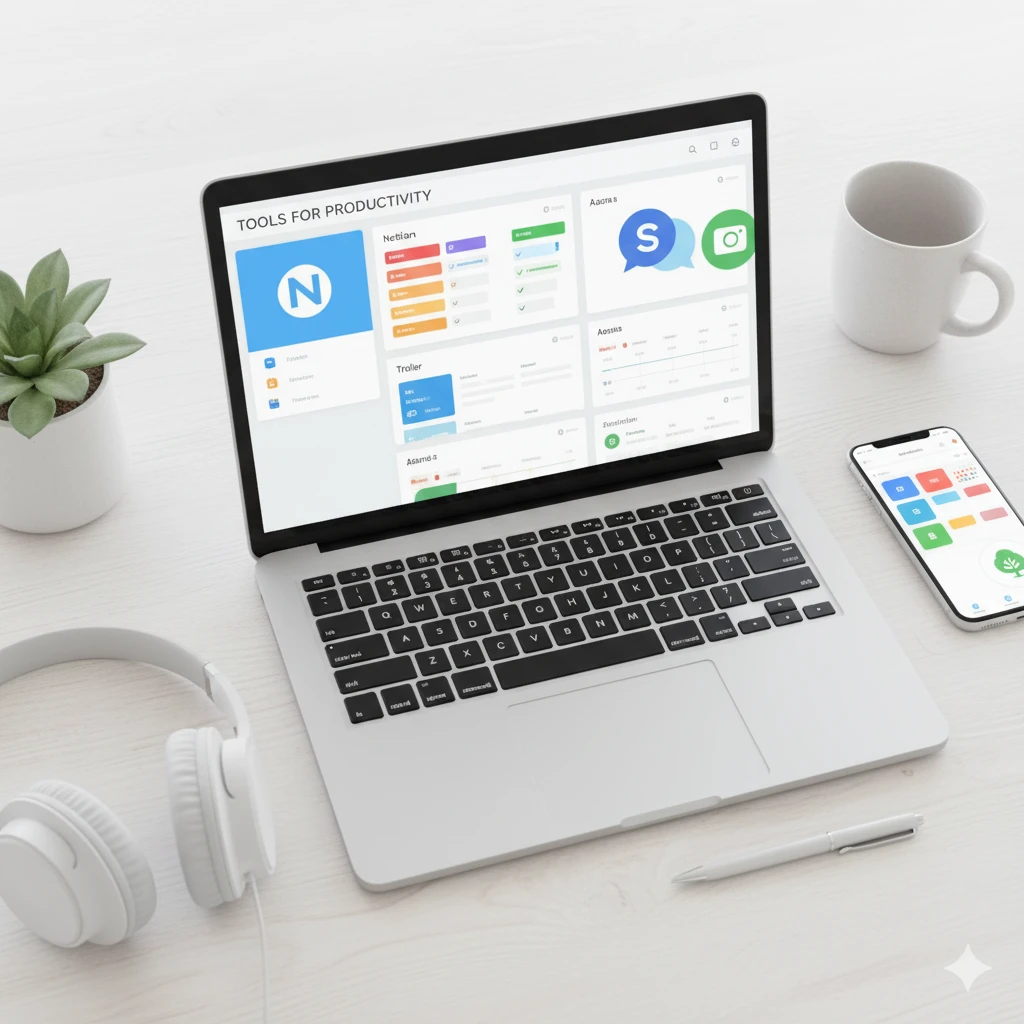
Here are some top options with quick pros and cons:
- Notion → All-in-one workspace for docs, tasks, and databases.
Pro: Flexible, integrates with many apps.
Con: Steep learning curve for beginners. - Trello → Visual task board.
Pro: Easy to use, good for small teams.
Con: Limited advanced features without paid plan. - Asana → Project and workflow management.
Pro: Excellent for tracking deadlines and dependencies.
Con: Can feel heavy for simple projects. - Slack / Microsoft Teams → Team communication hubs.
Pro: Centralized chat, calls, file sharing.
Con: Can add to hybrid work distractions if overused. - Freedom / Forest App → Focus apps that block distractions.
Pro: Great for deep work at home.
Con: Requires self-discipline to set up. - Google Calendar / Todoist → Scheduling and reminders.
Pro: Keeps hybrid schedules organized.
Con: Needs consistent updating. - Noise-Cancelling Headphones → Tech essential.
Pro: Immediate noise control in both home and office.
Con: Can be pricey.
For more app suggestions, see Digital Tools Every Side Hustler Should Use.
Work From Home vs Office Productivity: Which Is Better?
The debate of work from home vs office productivity continues. Remote work can boost focus for individual tasks, while offices enhance collaboration. Hybrid models combine both—but only if workers intentionally build systems.
📊 A 2024 Pew survey found that 41% of workers say they are more productive at home, while 34% report being more productive at the office. The remaining prefer a hybrid mix.
Here’s a quick comparison:
| Factor | Work From Home | Office | Hybrid |
|---|---|---|---|
| Focus | High (if disciplined) | Lower (due to noise/meetings) | Moderate-High |
| Collaboration | Low (planned only) | High (spontaneous) | Moderate-High |
| Work-Life Balance | Can blur boundaries | Clearer separation | Balance possible |
| Commute Stress | None | High | Partial |
| Overall Productivity | Strong for deep work | Strong for teamwork | Potentially best of both |
👉 See also Frugal Home Hacks: Save Energy Without Sacrificing Comfort for tips on optimizing your home environment.
Balancing Mental Health and Focus in Hybrid Work
Hybrid workers face unique stress: changing routines, isolation at home, and overstimulation in the office. Protecting mental health is key to sustaining focus.
- Set Boundaries: Define start/stop times
- Move Your Body: Exercise improves mood and concentration
- Digital Detox: Offline hours reduce fatigue
- Sleep Hygiene: Consistent sleep strengthens resilience
Related: Minimalism and Mental Health explores how simplicity supports focus and well-being.
Case Study: A Week in the Life of a Hybrid Worker
Monday/Wednesday (Office Days)
- Morning commute → podcast learning
- Office hours → schedule meetings and collaborative tasks
- Afternoon → solo tasks with headphones
Tuesday/Thursday/Friday (Home Days)
- Morning deep work block (90 minutes)
- Midday family break + quick lunch
- Afternoon calls and project updates
- Evening wrap-up ritual to separate work/home
FAQs: Hybrid Work Focus Questions Answered
Q: Is hybrid work better for productivity than remote only?
A: For many, yes. Hybrid blends focus time at home with collaboration in the office.
Q: What’s the best hybrid schedule for focus?
A: Two to three office days balance teamwork and solo focus.
Q: How can I avoid distractions at home during hybrid work?
A: Create boundaries—workspace, focus apps, and clear signals to family.
Q: What’s the best hybrid work desk setup for productivity?
A: A minimalist desk, ergonomic chair, and strong lighting. See Digital Minimalism Guide.
Q: How can hybrid workers avoid burnout?
A: Prioritize rest, maintain routines, and don’t overload office days.
Final Thoughts
Hybrid work is here to stay. Mastering hybrid work productivity requires intentional systems, the right tools for hybrid workers, and an understanding of common hybrid work distractions. The real secret is adapting habits so that work from home vs office productivity isn’t a battle, but a balance.
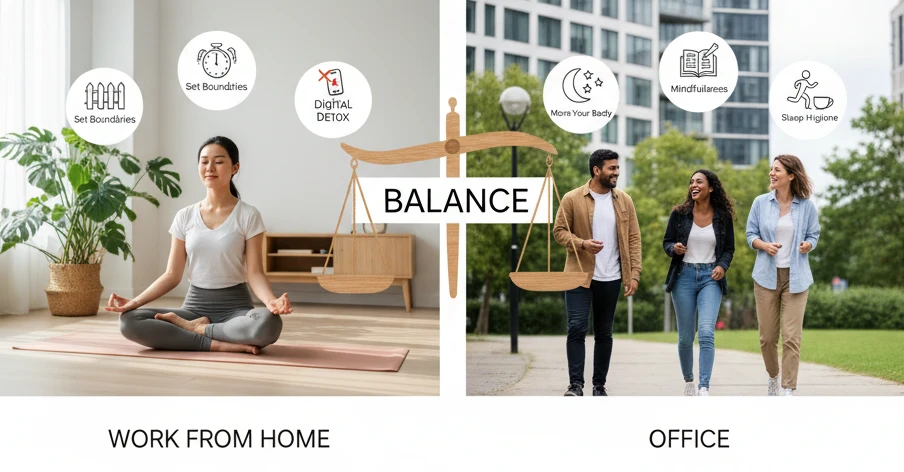
👉 Here’s a suggested reading flow to continue your journey:
- Start small: Time Management Tips for Side Hustlers → practical scheduling hacks.
- Go deeper: Digital Tools Every Side Hustler Should Use → explore essential apps for hybrid workers.
- Strengthen mindset: Minimalism and Mental Health → reduce mental clutter and stress.
- Expand lifestyle savings: Frugal Living Hacks to Save $100 Every Month.
- Anchor your foundation: Personal Finance 101: Money Habits That Build Wealth → your ultimate cornerstone guide.
With the right systems and mindset, you can thrive in both worlds—maintaining focus, protecting mental health, and building a career that’s future-proof in 2025 and beyond.

